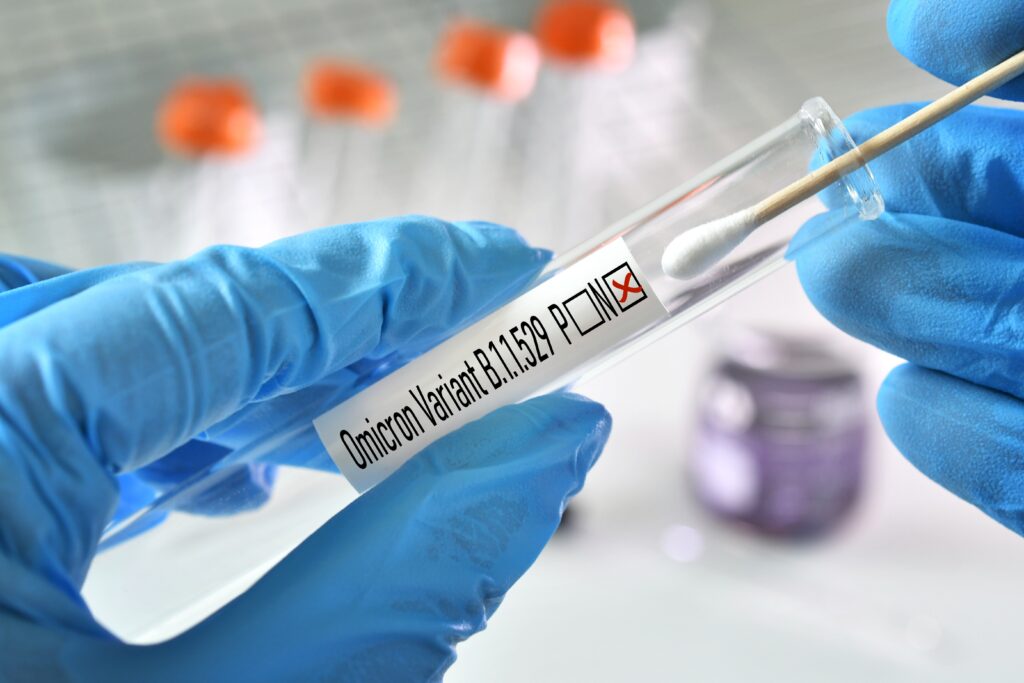Did Omicron Come from Rodents?
Learn About the Theory That Claims Omicron Variant May Have Originated From Mice or Rats
Scientists theorize that the Omicron variant may have come from a rodent — most likely a rat or mouse.
While SARS-CoV-2 or COVID-19 has multiple evolutions, the most dominant strain to date is Omicron, leading researchers and epidemiologists around the globe to focus on pinpointing its origins.
Unlike the mutations of other coronavirus strains, those of Omicron are extremely rare in humans, making it odd that the strain is currently the most easily transmissible among people.
In addition to Omicron being rarer in humans than other COVID-19 strains, it also has the most mutations — a total of over 50, many of which have never been seen before in humans by experts.
These facts are leading scientists to believe Omicron couldn’t have started from a people-to-people transmission, but rather by way of a rodent-to-person spread.
Of the existing Omicron mutations, researchers from the Chinese Academy of Sciences in Beijing, China in December 2021 confirmed that 45 closely resembled sequences found in a virus common in mice and rats.
Regardless of if the COVID-19 strain evolved in rodents before humans acquired it or not, it’s important to understand the risks wild mice and rats pose to people as well pets and to know when to seek help from professionals who can safely deal with an infestation of the disease-carrying varmints.
Omicron Mutations in Mice: Started with B.1.1
The incredible speed at which Omicron changes and produces new mutations is similar to the evolution of viruses seen in animals infected with COVID-19, especially mice.
According to the study conducted by the experts at the Chinese Academy of Sciences, one of the first Omicron mutations — a point mutation or base variant referred to as B.1.1, may have been transported from a mouse to a person midway through 2020, eventually evolving and spreading to another person by the end of 2021.

Another factor that hints to mice being the primary source of Omicron is that the spike proteins — or proteins responsible for injecting viruses in the cells of its host — in mutations of the COVID-19 strain appear to be very closely related to those inside the cells of infected mice.
Spike proteins of RNA viruses such as coronavirus normally change the RNA sequencing in humans from G to U, yet Omicron’s cause a switch from C to A.
Such alterations are common in rodents, but do not typically occur in people, further suggesting rodents, particularly mice, as the culprits behind Omicron.
In the same study, the senior author Dr. Wenfeng Qian revealed that of the 25 mutations in the Omicron spike proteins in humans, 18 were not found in lab mice, indicating to experts that the strain probably originated from wild mice.
How Rodents Directly & Indirectly Spread Diseases
Rodents can spread diseases to other organisms like wildfire, which makes the pests a threat to public health if they go unchecked in areas inhabited by humans.
Because rats and mice tend to frequent unsanitary places such as dumpsters and sewage systems in order to hide from predators, reproduce, or attain food, the critters tend to pick up viruses as well.
Once infected, rodents can transport the sickness to humans either directly by way of its feces, urine, and saliva or indirectly through parasites — namely fleas and ticks.
Unfortunately, rats and mice are ubiquitous, with cities such as Boston, Massachusetts and Hartford, Connecticut facing higher populations of the pests.
But ultimately, no matter where you are situated rodents can appear and getting an infestation of the disease-spreaders is incredibly challenging for non-professionals to resolve — not to mention dangerous.
Aside from being the potential originators of Omicron, simply coming into contact with rodent excrement can cause pets or people to become infected with Hantavirus, which impacts the pulmonary system, rabies, and salmonella among other RNA viruses.
Although not always deadly, the negative effects of contracting such diseases can be long-lasting, resulting in permanent respiratory issues and nerve damage.
For the inexperienced, confronting a rodent infestation is not just risky but unsafe and oftentimes unsuccessful.
Do-it-yourself methods are generally impermanent solutions, making reinfestation inevitable.
Additionally, without the proper technology, experience, or training, non-professionals put themselves and others in harm’s way.
Should you suspect rodents such as rats or mice on your property, call for a certified pest management technician to design a secure and enduring solution that ensures everyone’s safety.
Contact Catseye Pest Control for Rodent Control & Removal
There are few scenarios as unpleasant as struggling with a rodent infestation and properties with a mouse or rat problem generally require expert help.
By enlisting support from professionals such as those at Catseye Pest Control, homeowners or business owners can feel at ease and assured that their pest issue is in good hands.
As leaders in the pest management industry, our technicians are certified to be rid of rodents on the property by way of our professional Rodent Plus Program.
Effective in protecting residences or buildings against mice, rats, squirrels, and chipmunks, this service uses EPA-regulated, controlled solutions and strategies to eradicate the critters from the area.
And to keep the premises pest-free year-round, clients are encouraged to enroll in our Cat-Guard Exclusion Systems service.
By installing custom-made barriers in all access areas throughout the property, our licensed pest control specialists can reinforce your business, office, or home against disease-transmitting nuisance wildlife for the long-term.
Relieve yourself of unwelcome invaders and recruit the best pest experts in the field by contacting us to schedule a free inspection of your property today.
The post Did Omicron Come from Rodents? appeared first on Catseye Pest Control.
This article appeared first on Catseye Pest